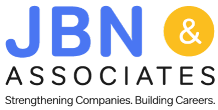When you hire a new executive, they have their work cut out for them. Your new executive hire faces a landscape of unique challenges in an environment where every decision leadership makes can have ripple effects across more than just your business.
Every industry has its own executive onboarding best practices to consider, especially in dynamic industries like yours. Adhering to these best practices will help you start your new leaders off on the right foot and make the most out of your newfound executive talent.
Why Your Company Needs an Executive Onboarding Plan
For many small businesses, when an executive who’s been with the company from the beginning decides to retire or move on to a new venture, they leave behind a hole in the company’s leadership and culture that can be extremely difficult to fill. Without a strategic executive onboarding plan, the new executives you choose may face challenges such as:
- Struggling to grasp your company’s vision, mission, goals, or market position
- Butting heads with other executives and direct reports
- Inadvertently discouraging employee engagement due to a lack of clarity about roles, responsibilities, and expectations
According to a 2023 report by Kinsley|Sarn, not having a comprehensive executive onboarding plan leads to newly hired executives underperforming and feeling isolated and unhappy. This can have ripple effects throughout your entire business—getting less done, seeing more employees exit, and missing opportunities to grow your business.
What Does the Executive Onboarding Process Look Like?
Onboarding a new executive is a different beast altogether from onboarding new hires at any other level of your company hierarchy. The responsibilities of company leadership demand a comprehensive and strategic process.
The executive onboarding process must ensure your new executive gets your culture, goals, and the nuances of your industry. This process isn’t something you can do in just one day if you want to ensure that your new leader understands your business and their place in it.
What should be included in executive onboarding?
Beyond the customary paperwork and office tours, an executive onboarding plan must give your new executive ample opportunities to get to know your company and its people.
Key elements that should be included to follow executive onboarding best practices include:
Pre-Boarding Engagement
Provide relevant materials and information about your company ahead of your new executive’s initial start date:
- A welcome package that introduces them to your company’s history, mission, and values
- An org chart outlining reporting relationships and key departments
- Information on your company’s workplace environment and culture
- An overview of your company’s current strategic initiatives and the KPIs and metrics you use to measure success
- Reports highlighting the company’s health
- Information on upcoming projects and initiatives
Begin relationship-building in advance by connecting them with the key stakeholders and team members they will be working with:
- One-on-one welcome meetings
- Informal coffee chats or lunch appointments
- Pre-onboarding team calls
- In-person or virtual meet-and-greet sessions
- Shadowing opportunities
Strategic Onboarding and Immersion
Provide an overview of your industry, including key trends, challenges, and opportunities—especially if your new executive is coming from another industry or market. Get your new executive up to speed on topics such as:
- The regulatory landscape
- A high-level understanding of your competition
- Your company’s place in the bigger market picture
Set up on-site visits and encourage hands-on experiences to deepen their understanding of your day-to-day operations.
Mentoring and Performance Metrics
Even executive leaders need mentors, especially new leaders. Assign an experienced mentor, coach, or peer support to guide your new executive through their initial months. However, you don’t want to spend too much time holding their hand—by the end of the first month, your new executive should mainly be working on their own.
Establish a structured schedule for check-ins with HR, senior leaders, and direct reports to assess the executive’s contributions and alignment with your culture and goals.
Encourage open communication and provide constructive feedback to support the executive as they settle in. An effective executive onboarding plan involves setting clear expectations and providing ongoing support to welcome new executives into your company culture.
Leadership Development Opportunities
Executives have their own paths for growth and development in the corporate environment. Helping new executives find and follow these paths ensures you get the most out of hiring them and they get the most out of working for you.
Your new executive may already have their own plan for developing their leadership abilities. See what you can do to support them on their journey.
Exploring Executive Onboarding Best Practices for the Real Estate and Fresh Foods Industry
While corporate environments all around the world have much in common, there are no truly one-size-fits-all plans for onboarding a new executive.
Following unique best practices for your industry includes tailoring the onboarding experience to industry specifics—for example, understanding construction timelines, agricultural cycles, or supply chain intricacies—to ensure that executives are not only well-versed in corporate strategy but also equipped to navigate the unique challenges posed by your industry.
Executive Onboarding Best Practices for Real Estate
- Market Deep Dive:
- Conduct an in-depth analysis of the local and regional real estate markets.
- Provide executives with market trends, forecasts, and potential challenges.
- Regulatory Landscape Familiarization:
- Offer detailed briefings on zoning laws, building codes, and environmental regulations.
- Facilitate connections with legal experts to ensure compliance and mitigate risks.
- Network Building:
- Arrange introductions to key stakeholders, including local government officials, developers, and industry influencers.
- Encourage participation in industry events and networking opportunities.
- Project Portfolio Review:
- Provide a comprehensive overview of the organization’s current and upcoming real estate projects.
- Highlight strategic priorities and timelines for ongoing initiatives.
- Financial and Investment Training:
- Offer training on financial modeling specific to real estate transactions.
- Familiarize executives with investment strategies, ROI calculations, and risk management.
Executive Onboarding Best Practices for Produce and Fresh Food
- Seasonal Cycle Overview:
- Educate executives on the seasonal variations and challenges in the produce industry.
- Provide insights into crop cycles and their impact on supply and demand.
- Food Safety Protocols:
- Prioritize training on food safety regulations and industry best practices.
- Introduce executives to quality control measures at different stages of production.
- Sustainability Integration:
- Emphasize the importance of sustainable farming practices.
- Showcase initiatives related to environmental stewardship and community engagement.
- Quality Control and Standards:
- Provide training on quality control measures and adherence to industry standards and regulations.
- Provide executives with a clear understanding of the organization’s commitment to product quality and safety.
- Consumer Trends and Preferences:
- Stay current with consumer trends and preferences in the fresh produce market.
- Encourage executives to explore innovative approaches to meet changing consumer demands.
Make Onboarding a New Executive Easy
As organizations vie for top-tier leadership, following executive onboarding best practices ensures that you can make the most of your newfound executive talent. At JBN & Associates, we bring a wealth of experience in real estate, construction, produce, and fresh foods to our executive search consulting services.
With expert guidance, personalized attention, and a flat fee structure, we’ll help you find, retain, and get the most out of the executive talent you need to succeed. To get started, give us a call or send us a message today.






